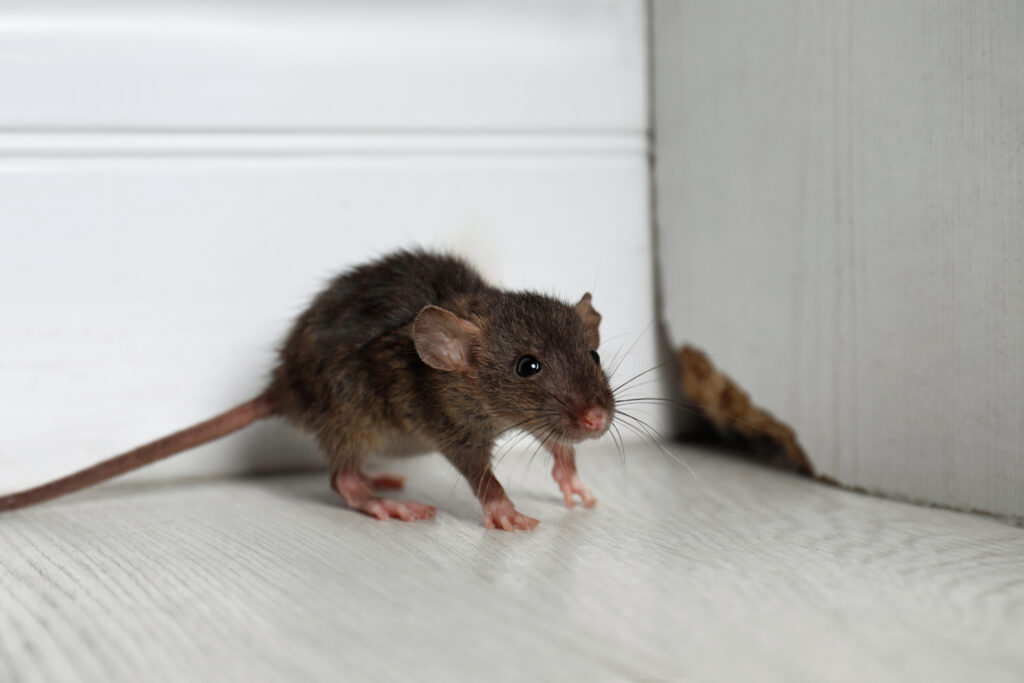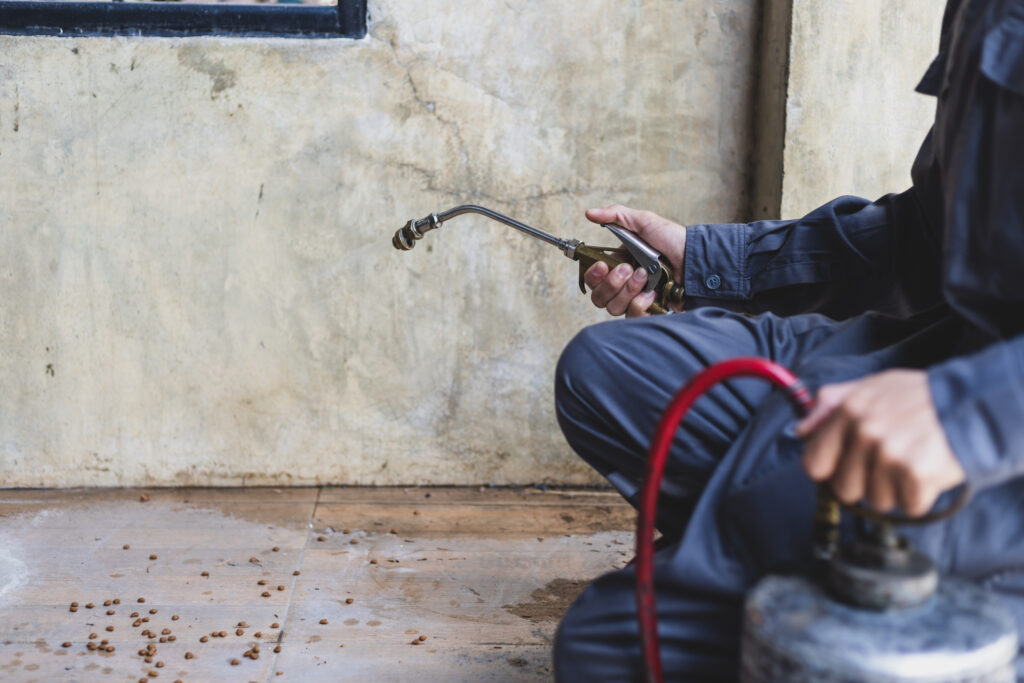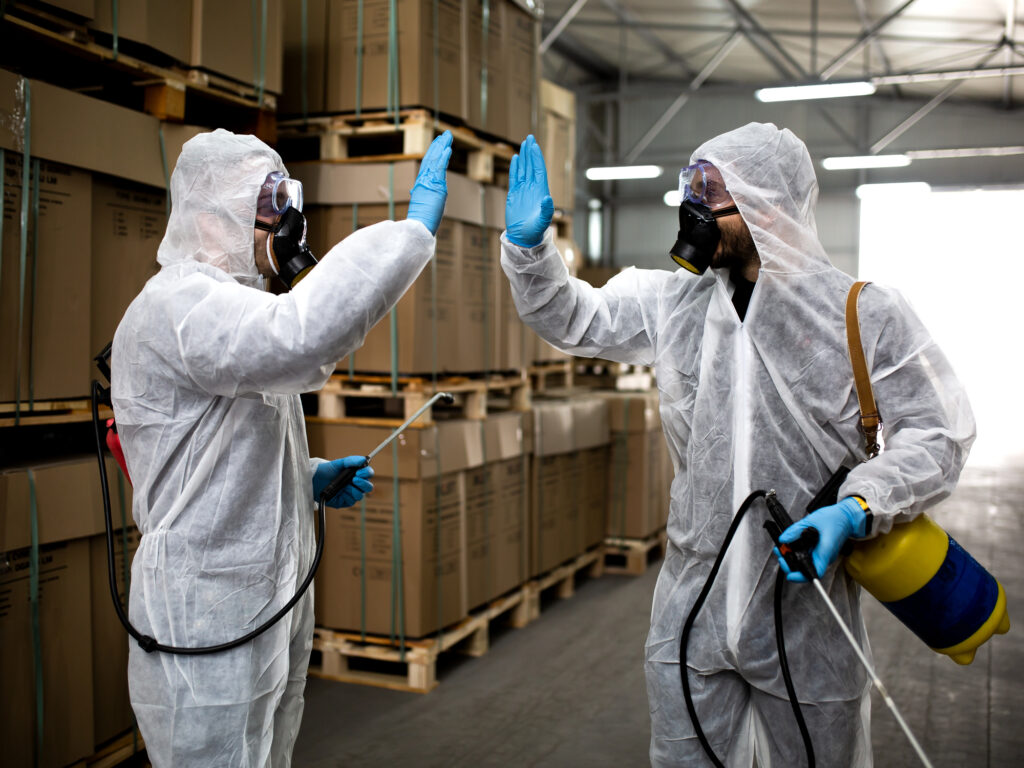As the world grapples with increasing urbanization and changing environmental conditions, the pest control industry is facing significant evolution. Pests, whether rodents, insects, or other nuisances, continue to pose challenges to public health, food safety, and property maintenance, prompting a need for effective management strategies.
In 2025, the industry is expected to shift towards more sustainable practices and advanced technologies, shaping the way pest control services are delivered. Consumers are becoming more aware of their environmental impact, leading to a rise in demand for eco-friendly solutions and integrated pest management strategies, while the integration of technology hints at a more efficient future in pest management.
This article will explore the key trends shaping the pest control industry in 2025 in North America, the US to be precise, delving into pest infestation statistics, public demand, the challenges of resistance and regulation, and economic insights. By understanding these dynamics, stakeholders can better navigate the evolving landscape of pest control.
Key Trends in Pest Control for 2025

The U.S. professional pest control market was valued at approximately $24.9 billion in 2023, with a projected compound annual growth rate (CAGR) of nearly 5.7 percent over the forecast period of the next five years. By 2032, the pest control services market is expected to reach $42.5 billion, as reported by Allies Market Research. The market is anticipated to grow significantly, reflecting an increase from $22.7 billion to $29.1 billion by 2026. With over 34,000 pest control businesses in the U.S. generating $17.4 billion as of January 2023, the demand for effective pest management solutions remains high, particularly with termites causing more than $5 billion in property damage annually.
Eco-Friendly Solutions
Rising concerns around the impact of climate change have shifted consumer preferences toward pest control companies utilizing eco-friendly products and methods. These businesses prioritize sustainability while minimizing harm to non-target organisms and ecosystems. Botanical-based pesticides, derived from natural plant extracts, are valued for their non-toxic and biodegradable nature, presenting reduced environmental impact. Integrated Pest Management (IPM) offers an environmentally sensitive approach by combining knowledge of pest life cycles with ecosystem interactions to minimize hazards to humans, pets, and properties.
Integrated Pest Management (IPM)
Integrated Pest Management (IPM) is increasingly popular due to its sustainable and eco-friendly approach. This strategy employs data on pest life cycles and environmental interactions, focusing on long-term prevention through monitoring and targeted interventions. IPM practices reduce reliance on reactive pesticide applications and align with government support, promoting sustainable methods. The technique enhances pest control effectiveness by allowing early identification of infestations and reducing pest attraction.
Technology Adoption in Pest Control
Pest control companies are leveraging advanced technologies such as the Internet of Things (IoT), data analytics, and remote monitoring to enhance operations. The use of artificial intelligence (AI) automates pest detection, monitoring, and treatment planning, aiding in the early detection of infestations. Smart systems equipped with infrared sensors, cameras, and wireless technology improve monitoring and response capabilities. This technology adoption results in improved operational efficiency and customer service, with digital platforms aiding client communication and data collection, providing a competitive edge in meeting consumer sustainability concerns.
Pest Infestation Frequency Statistics

Pest infestations are a common issue across the United States, affecting a significant number of households annually. For instance, approximately 41% of surveyed households in New Orleans reported encountering cockroaches, indicating the high prevalence of this pest in the region. Termites are another major concern, with more than 600,000 homes facing infestations each year, underscoring the importance of ongoing pest control efforts.
In low-income apartments across four New Jersey cities, bed bug infestation rates vary dramatically, ranging from 3.8% to 29.5%. The overall infestation rate stands at 12.3%, highlighting the susceptibility of economically challenged areas to this pervasive pest.
Most Common Types of Infestations
Across the United States, ants top the list of reported pests, with 56% of households experiencing infestations. Following closely are mice and cockroaches, affecting 29% and 23% of homes, respectively. Termites remain a widespread issue as well, influencing over 600,000 residences annually. Certain urban areas in the South report the highest number of cockroach sightings, emphasizing the regional nature of pest challenges.
Seasonal changes, including variations in temperature and humidity, play a significant role in pest behavior. These environmental factors can lead to increased activity and movement of pests, influencing infestation patterns across different times of the year.
Regional Variations in Pest Infestations
Regional differences largely dictate the types and frequencies of pest infestations in the U.S. In the western part of the country, 44% of residents report encountering pests, with spiders being notably prevalent at 21%. The Southeast struggles with ants, cockroaches, and fleas, recording infestation rates of 61%, 36%, and 32%, respectively.
In the northeast, mouse infestations are most common, with 35% of residents reporting encounters with these pests. Meanwhile, the shift towards do-it-yourself pest control methods is becoming more popular, as many homeowners prefer handling pest issues independently, reflecting a growing trend in pest management preferences across various regions.
Get Started With Pest Control Software!
Public Awareness and Demand for Pest Control

The demand for pest control services is on the rise, driven largely by the significant threats pests pose to public health and property. Insects, such as mosquitoes, can carry diseases like Zika virus and malaria, impacting public safety. As urbanization increases, cities face higher population densities, creating environments where pest problems become more prevalent and public awareness grows. Consequently, awareness about maintaining hygiene and the dangers of pests and increased pest populations leads to increased demand for pest management solutions.
Cleanliness Trends Impacting Demand
Since the onset of the pandemic, there has been a marked shift towards cleanliness, with 85% of individuals more mindful of cleaning practices at home. This trend is mirrored in public spaces, where over 90% of people have a heightened awareness of hygiene, driving demand for pest control services. Persistent bedbug infestations further underscore the need for effective pest management and public concern over cleanliness. As a result, both residential and commercial sectors are investing more in pest control solutions, with a growing preference for eco-friendly options that align with these heightened cleanliness standards.
Consumer Attitudes Toward Pest Control Services
Consumers are increasingly favoring eco-friendly pest control services from commercial segments, seeking sustainable products that minimize environmental impact. There’s a rising demand for botanical-based pesticides derived from natural plant extracts, as they offer non-toxic and biodegradable solutions. Simultaneously, a significant number of homeowners are embracing DIY pest control methods, using baits and traps alongside smart devices. However, these DIY methods often come with challenges, such as limited effectiveness, as they tend to address only the symptoms rather than the root cause of the infestation. Modern consumers also expect advanced technologies from pest control companies, preferring service providers that deliver innovative and effective strategies. The pest control market is adapting to these changing preferences, expanding as companies align their offerings with contemporary consumer expectations and trends.
Challenges Facing the Pest Control Industry

The pest control industry is grappling with several challenges, primarily driven by increasing regulations and changing pest dynamics. The California Ecosystems Protection Act of 2023 exemplifies new laws that limit the use of certain rodenticides, complicating compliance for pest control companies. Labor shortages further strain the industry, with 22.6% of pest control businesses identifying employee retention as a significant challenge. Additionally, the industry must contend with growing pesticide resistance, necessitating the development of new, costly chemical formulations. The economic impact of pest infestations in sectors such as agriculture and food production adds another layer of complexity, prompting major players and key players in this competitive landscape to innovate their operational strategies.
Pest Resistance to Chemical Treatments
Pesticide resistance is a rising concern in the pest control industry as pests increasingly adapt to withstand commonly used chemicals. This resistance diminishes the effectiveness of traditional pest control methods, making it harder to manage infestations. To combat this issue, the industry is pushed to innovate with new, often more expensive, pesticide formulations. Integrating plant-derived chemicals and adopting integrated pest management practices can help mitigate these challenges. However, the growing issue of pesticide resistance remains a significant threat, affecting both the efficacy and cost-effectiveness of pest management solutions.
Impact of Stringent Regulation Changes
Regulatory changes focusing on environmental and safety concerns are reshaping pest control practices. With tightened pesticide usage regulations, the industry is shifting towards eco-friendly and sustainable solutions. Increased monitoring of pesticide residue in food necessitates stricter compliance from pest control companies. Enhanced safety measures protect pest control operators, while regulations now demand transparency and detailed reporting of pesticide use. The EPA’s revisions to longstanding acts like the Federal Insecticide, Fungicide, and Rodenticide Act have tightened the industry’s regulatory framework, influencing methods and operational standards.
Economic Insights Into the Pest Control Market

The pest control industry continues to show significant economic potential due to its vital role in property protection and public health. The U.S. market alone is expected to grow from $22.7 billion in 2022 to $29.1 billion by 2026, reflecting an increase of nearly $7 billion. This substantial growth is driven by the rising awareness of human health risks posed by pests and the corresponding demand for professional pest control services. Pests such as termites cause over $5 billion in property damage annually in the United States, highlighting the essential nature and financial weight of the industry.
Market Growth Projections
The pest control market’s growth trajectory points toward robust expansion, with some of the largest market share projections indicating the market will reach $42.5 billion by 2032. In 2023, over 34,000 pest control businesses were operational in the U.S., contributing to a projected industry revenue of $17.4 billion. This growth aligns with an estimated compound annual growth rate (CAGR) of 5.7% for the professional pest control market over the next five years. Increasing public awareness about pest-related health risks and structural damage are key factors driving this growth. Employment for pest control workers is also expected to grow by 3% from 2022 to 2032.
Consumer Spending Behaviors
Consumer investment in pest management is significant, with Americans spending around $6.5 billion annually on pest control services. On average, an individual spends about $575 per year on these transactions, signifying a considerable financial commitment. A survey found that 45% of people are prepared to spend up to $200 to prevent pests, though most national averages for services exceed this amount. A one-time annual visit typically costs between $250 and $600, reflecting the importance of preventative measures in managing common pest issues effectively. The industry has experienced a growth rate of 2.8% over the past five years, underscoring an increasing reliance on professional pest control solutions.
Utilizing Pest Control Software to Increase Profits
The pest control industry is increasingly turning to software solutions, like PestPac, to enhance operational efficiency and profitability. By automating administrative tasks, these platforms allow pest control businesses to streamline operations, manage teams effectively, and focus on improving customer service. The adoption of such software is not just about convenience; it provides a competitive edge by enabling companies to stay ahead, servicing more efficiently while identifying opportunities for new service offerings in a rapidly evolving market.
Embracing pest control software can lead to significant industry growth by improving customer satisfaction through smarter pest management strategies. The ability to collect and analyze pest data helps businesses develop more effective prevention and control measures, ultimately leading to higher revenue. Moreover, this technological advancement serves as a pivotal factor for long-term profitability, giving companies a first-mover advantage in the market.
As these software solutions become more widespread, the pest control market is poised for considerable expansion. Businesses that leverage these technologies can expect improved operational performance and an increase in market share. This trend highlights the importance of integrating advanced software to adapt to industry demands and achieve sustained growth.
Advantages of Using PestPac
PestPac is a comprehensive pest control software solution designed to make your business more efficient. Utilizing PestPac can offer numerous benefits to your company, including:
1. Increased efficiency: Simplifies different areas of pest control operations, including scheduling, billing and customer communication. This can assist businesses in conserving time and resources by automating routine tasks, enabling technicians to prioritize delivering quality service to customers.
2. Improved customer service: Companies can readily gather customer details, history, and preferences, helping them offer tailored service and foster stronger connections with their clients. This can result in increased customer satisfaction and retention.
3. Enhanced accuracy: The system improves accuracy by monitoring treatments, pest control products used, and scheduling details, which helps minimize errors. This ensures that technicians adhere to the correct procedures and deliver effective pest control solutions.
4. Reporting and Analytics: Provide essential tools for businesses to monitor key performance metrics, recognize trends, and make informed decisions based on data. By examining this information, companies can enhance their operations, boost efficiency, and ultimately improve their financial performance.
Closing Thoughts
As the pest control industry evolves, staying ahead of technological trends is crucial for success. The integration of advanced software solutions like PestPac not only streamlines operations but also enhances the overall customer experience. Companies that embrace these innovations position themselves to adapt to market shifts and consumer expectations more effectively.
The growing emphasis on sustainability and environmentally friendly pest control practices further underscores the importance of leveraging data analytics. By understanding pest behavior and environmental impacts, businesses can develop comprehensive management plans that not only meet regulatory standards but also appeal to a more environmentally conscious consumer base.
Looking ahead to 2025 and beyond, businesses that prioritize pest control technology adoption and customer engagement are likely to set the benchmarks for success in the pest control industry. With real-time data and effective communication tools, pest control professionals can foster deeper customer relationships and ensure consistent service quality. The future of pest control hinges on innovation, data-driven decision-making, and a commitment to customer service. Companies that invest in software solutions, such as PestPac, are equipped to navigate challenges, seize opportunities, and remain competitive in a rapidly evolving marketplace. By keeping these factors in mind, pest control providers can achieve sustained growth and customer loyalty, shaping the future of the industry in a positive direction. Ready to grow your business? Book your free demo today!




